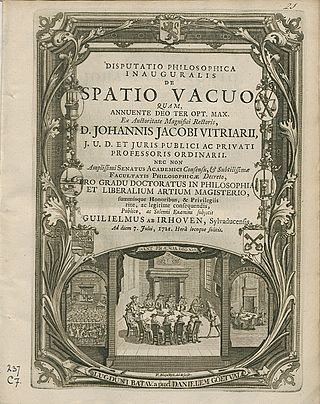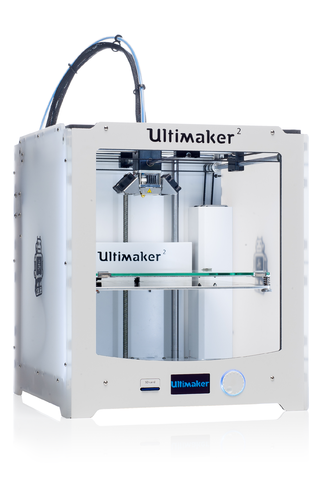Related Research Articles

A mimeograph machine was a low-cost duplicating machine that worked by forcing ink through a stencil onto paper. The process was called mimeography, and a copy made by the process was a mimeograph.
Real-time computing (RTC) is the computer science term for hardware and software systems subject to a "real-time constraint", for example from event to system response. Real-time programs must guarantee response within specified time constraints, often referred to as "deadlines".

Article Five of the United States Constitution describes the procedure for altering the Constitution. Under Article Five, the process to alter the Constitution consists of proposing an amendment or amendments, and subsequent ratification.

Inkjet printing is a type of computer printing that recreates a digital image by propelling droplets of ink onto paper and plastic substrates. Inkjet printers were the most commonly used type of printer in 2008, and range from small inexpensive consumer models to expensive professional machines. By 2019, laser printers outsold inkjet printers by nearly a 2:1 ratio, 9.6% vs 5.1% of all computer peripherals.

A printed circuit board (PCB), also called printed wiring board (PWB), is a medium used to connect or "wire" components to one another in a circuit. It takes the form of a laminated sandwich structure of conductive and insulating layers: each of the conductive layers is designed with a pattern of traces, planes and other features etched from one or more sheet layers of copper laminated onto and/or between sheet layers of a non-conductive substrate. Electrical components may be fixed to conductive pads on the outer layers in the shape designed to accept the component's terminals, generally by means of soldering, to both electrically connect and mechanically fasten them to it. Another manufacturing process adds vias, plated-through holes that allow interconnections between layers.

A yearbook, also known as an annual, is a type of a book published annually. One use is to record, highlight, and commemorate the past year of a school. The term also refers to a book of statistics or facts published annually. A yearbook often has an overarching theme that is present throughout the entire book.

A thesis, or dissertation, is a document submitted in support of candidature for an academic degree or professional qualification presenting the author's research and findings. In some contexts, the word thesis or a cognate is used for part of a bachelor's or master's course, while dissertation is normally applied to a doctorate. This is the typical arrangement in American English. In other contexts, such as within most institutions of the United Kingdom and Republic of Ireland, the reverse is true. The term graduate thesis is sometimes used to refer to both master's theses and doctoral dissertations.
A production assistant, also known as a PA, is a member of the film crew and is a job title used in filmmaking and television for a person responsible for various aspects of a production. The job of a PA can vary greatly depending on the budget and specific requirements of a production as well as whether the production is unionized.

3D printing or additive manufacturing is the construction of a three-dimensional object from a CAD model or a digital 3D model. It can be done in a variety of processes in which material is deposited, joined or solidified under computer control, with the material being added together, typically layer by layer.
Perpetual copyright, also known as indefinite copyright, is copyright that lasts indefinitely. Perpetual copyright arises either when a copyright has no finite term from outset, or when a copyright's original finite term is perpetually extended. The first of these two scenarios is highly uncommon, as the current laws of all countries with copyright statutes set a standard limit on the duration, based either on the date of creation/publication, or on the date of the creator's death. Exceptions have sometimes been made, however, for unpublished works. Usually, special legislation is required, granting a perpetual copyright to a specific work.
Construction management (CM) aims to control the quality of a project's scope, time, and cost to maximize the project owner's satisfaction. It uses project management techniques and software to oversee the planning, design, construction and closeout of a construction project safely, on time, on budget and within specifications.

Alief Kerr High School is an Alief ISD public school located in the Alief community, and in the limited purpose city limits of Houston, Texas, United States. The school is a part of the Alief Independent School District and serves grades 9 through 12.

Organ printing utilizes techniques similar to conventional 3D printing where a computer model is fed into a printer that lays down successive layers of plastics or wax until a 3D object is produced. In the case of organ printing, the material being used by the printer is a biocompatible plastic. The biocompatible plastic forms a scaffold that acts as the skeleton for the organ that is being printed. As the plastic is being laid down, it is also seeded with human cells from the patient's organ that is being printed for. After printing, the organ is transferred to an incubation chamber to give the cells time to grow. After a sufficient amount of time, the organ is implanted into the patient.

Textile printing is the process of applying color to fabric in definite patterns or designs. In properly printed fabrics the colour is bonded with the fibre, so as to resist washing and friction. Textile printing is related to dyeing but in dyeing properly the whole fabric is uniformly covered with one colour, whereas in printing one or more colours are applied to it in certain parts only, and in sharply defined patterns.
Game testing, also called quality assurance (QA) testing within the video game industry, is a software testing process for quality control of video games. The primary function of game testing is the discovery and documentation of software defects. Interactive entertainment software testing is a highly technical field requiring computing expertise, analytic competence, critical evaluation skills, and endurance. In recent years the field of game testing has come under fire for being extremely strenuous and unrewarding, both financially and emotionally.

In printing and publishing, proofs are the preliminary versions of publications meant for review by authors, editors, and proofreaders, often with extra-wide margins. Galley proofs may be uncut and unbound, or in some cases electronically transmitted. They are created for proofreading and copyediting purposes, but may also be used for promotional and review purposes.

Designated for assignment (DFA) is a contractual term used in Major League Baseball (MLB). A player who is designated for assignment is immediately removed from the team's 40-man roster, after which the team must, within seven days, return the player to the 40-man roster, place the player on waivers, trade the player, release the player, or "send outright" the player from the 40-man roster into Minor League Baseball.
The copyright law of the United States grants monopoly protection for "original works of authorship". With the stated purpose to promote art and culture, copyright law assigns a set of exclusive rights to authors: to make and sell copies of their works, to create derivative works, and to perform or display their works publicly. These exclusive rights are subject to a time and generally expire 70 years after the author's death or 95 years after publication. In the United States, works published before January 1, 1929, are in the public domain.
Civil discovery under United States federal law is wide-ranging and can involve any material which is relevant to the case except information which is privileged, information which is the work product of the opposing party, or certain kinds of expert opinions. Electronic discovery or "e-discovery" is used when the material is stored on electronic media.
Software copyright in China in Chinese Law means that a creator or other Obligee enjoys exclusive rights of the software under related copyright law.
References
- ↑ "Andersonville Prison". American Battlefield Trust. 18 December 2008. Retrieved 2020-05-15.
- 1 2 "The Mavens' Word of the Day". Randomhouse.com. 2000-04-20. Archived from the original on 2013-10-16. Retrieved 2013-08-30.